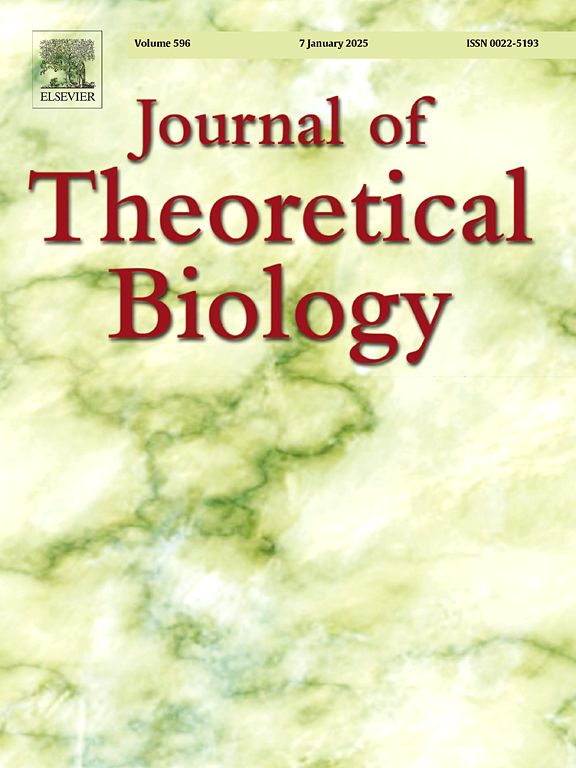Optimal targeted therapy for multiple cancers based on contrastive Notch signaling networks
IF 2
4区 数学
Q2 BIOLOGY
引用次数: 0
Abstract
Over decades, cancer understanding has advanced significantly at molecular and cellular levels, leading to various therapies based on intra-/inter-cellular networks. Despite this, cancer still remains a leading cause of death globally. The Notch signaling pathway, a crucial intercellular network in many cancers, has been extensively studied and therapies targeting the Notch pathway also have been well-studied based on inhibiting various stages of Notch activation. Nonetheless, the unclear pathophysiological mechanisms of metastasis, responsible for about 90 % of cancer deaths, complicate treatment development. For example, the role of Notch signaling varies between cancers; in non-small cell lung cancer, Notch1 and Notch2 exhibit opposing effects compared to their roles in embryonal brain tumors. This suggests that a single targeted therapy to Notch signaling could produce opposing effects in the metastatic state, necessitating a more careful selection of therapies. To address this, we considered a scenario involving multiple cancers with contrasting Notch signaling pathways. We developed two mathematical models and explored optimal targeted therapies for reducing cancer cells in the metastatic state of two types of cancers with these contrasting pathways. From the in silico tests of existing Notch-targeted therapies and newly suggested therapies in this study, we found that multiple cancers with contrasting Notch networks can be controlled by one common targeted signal network. Furthermore, combination therapies enhancing Notch production may be most effective in early-stage cancer, whereas cleavage therapies may prove more effective in late-stage cancer. We also found that the order of multiple targeted therapies significantly affects treatment effectiveness and should be a key consideration. Our study proposes that optimal treatment should take into account the cancer stage, with careful selection and sequencing of medication therapies.
基于对比Notch信号网络的多种癌症的最佳靶向治疗。
几十年来,对癌症的认识在分子和细胞水平上取得了显著进展,导致了基于细胞内/细胞间网络的各种治疗方法。尽管如此,癌症仍然是全球死亡的主要原因。Notch信号通路是许多癌症中至关重要的细胞间网络,已被广泛研究,基于抑制Notch激活的各个阶段,针对Notch通路的治疗也得到了很好的研究。然而,转移的病理生理机制尚不清楚,导致约90%的癌症死亡,使治疗进展复杂化。例如,Notch信号的作用因癌症而异;在非小细胞肺癌中,Notch1和Notch2表现出与其在胚胎脑肿瘤中的作用相反的作用。这表明针对Notch信号的单一靶向治疗可能在转移状态下产生相反的效果,因此需要更仔细地选择治疗方法。为了解决这个问题,我们考虑了一种涉及多种具有不同Notch信号通路的癌症的情况。我们开发了两个数学模型,并探索了两种不同途径的癌症转移状态下减少癌细胞的最佳靶向治疗方法。通过对现有Notch靶向治疗方法和本研究中新提出的治疗方法的计算机测试,我们发现具有不同Notch网络的多种癌症可以由一个共同的靶向信号网络控制。此外,增强Notch生成的联合疗法可能在早期癌症中最有效,而切割疗法可能在晚期癌症中更有效。我们还发现,多个靶向治疗的顺序显著影响治疗效果,应该是一个关键的考虑因素。我们的研究表明,最佳治疗应该考虑到癌症的分期,仔细选择和排序药物治疗。
本文章由计算机程序翻译,如有差异,请以英文原文为准。
求助全文
约1分钟内获得全文
求助全文
来源期刊
CiteScore
4.20
自引率
5.00%
发文量
218
审稿时长
51 days
期刊介绍:
The Journal of Theoretical Biology is the leading forum for theoretical perspectives that give insight into biological processes. It covers a very wide range of topics and is of interest to biologists in many areas of research, including:
• Brain and Neuroscience
• Cancer Growth and Treatment
• Cell Biology
• Developmental Biology
• Ecology
• Evolution
• Immunology,
• Infectious and non-infectious Diseases,
• Mathematical, Computational, Biophysical and Statistical Modeling
• Microbiology, Molecular Biology, and Biochemistry
• Networks and Complex Systems
• Physiology
• Pharmacodynamics
• Animal Behavior and Game Theory
Acceptable papers are those that bear significant importance on the biology per se being presented, and not on the mathematical analysis. Papers that include some data or experimental material bearing on theory will be considered, including those that contain comparative study, statistical data analysis, mathematical proof, computer simulations, experiments, field observations, or even philosophical arguments, which are all methods to support or reject theoretical ideas. However, there should be a concerted effort to make papers intelligible to biologists in the chosen field.

 求助内容:
求助内容: 应助结果提醒方式:
应助结果提醒方式:


